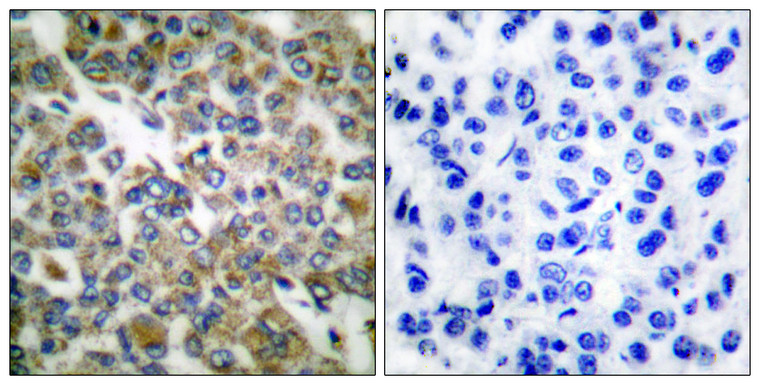| Host: |
Rabbit |
| Applications: |
WB/IHC/IF/ELISA |
| Reactivity: |
Human/Mouse/Rat |
| Note: |
STRICTLY FOR FURTHER SCIENTIFIC RESEARCH USE ONLY (RUO). MUST NOT TO BE USED IN DIAGNOSTIC OR THERAPEUTIC APPLICATIONS. |
| Short Description: |
Rabbit polyclonal antibody anti-Keratin, type I cytoskeletal 14 and Keratin, type I cytoskeletal 16 (1-50 aa) is suitable for use in Western Blot, Immunohistochemistry, Immunofluorescence and ELISA research applications. |
| Clonality: |
Polyclonal |
| Conjugation: |
Unconjugated |
| Isotype: |
IgG |
| Formulation: |
Liquid in PBS containing 50% Glycerol, 0.5% BSA and 0.02% Sodium Azide. |
| Purification: |
The antibody was affinity-purified from rabbit antiserum by affinity-chromatography using epitope-specific immunogen. |
| Concentration: |
1 mg/mL |
| Dilution Range: |
WB 1:500-1:2000IHC 1:100-1:300IF 1:200-1:1000ELISA 1:20000 |
| Storage Instruction: |
Store at-20°C for up to 1 year from the date of receipt, and avoid repeat freeze-thaw cycles. |
| Gene Symbol: |
KRT14KRT16 |
| Gene ID: |
38613868 |
| Uniprot ID: |
K1C14_HUMANK1C16_HUMAN |
| Immunogen Region: |
1-50 aa |
| Specificity: |
Cytokeratin 14/16 Polyclonal Antibody detects endogenous levels of Cytokeratin 14/16 protein. |
| Immunogen: |
The antiserum was produced against synthesized peptide derived from the human Keratin 14 at the amino acid range 1-50 |
| Post Translational Modifications | A disulfide bond is formed between rather than within filaments and promotes the formation of a keratin filament cage around the nucleus. Ubiquitinated by the BCR(KLHL24) E3 ubiquitin ligase complex. |
| Function | The nonhelical tail domain is involved in promoting KRT5-KRT14 filaments to self-organize into large bundles and enhances the mechanical properties involved in resilience of keratin intermediate filaments in vitro. |
| Protein Name | Keratin - Type I Cytoskeletal 14Cytokeratin-14Ck-14Keratin-14K14 |
| Database Links | Reactome: R-HSA-446107Reactome: R-HSA-6805567Reactome: R-HSA-6809371 |
| Cellular Localisation | CytoplasmNucleusExpressed In Both As A Filamentous Pattern |
| Alternative Antibody Names | Anti-Keratin - Type I Cytoskeletal 14 antibodyAnti-Cytokeratin-14 antibodyAnti-Ck-14 antibodyAnti-Keratin-14 antibodyAnti-K14 antibodyAnti-KRT14 antibody |
Information sourced from Uniprot.org
12 months for antibodies. 6 months for ELISA Kits. Please see website T&Cs for further guidance









![Anti-Cytokeratin 14 antibody [EP1601Y+LL002] (STJ16101645) Anti-Cytokeratin 14 antibody [EP1601Y+LL002] (STJ16101645)](https://cdn11.bigcommerce.com/s-zso2xnchw9/images/stencil/300x300/products/152151/347024/STJ16101645_1__97001.1681999276.jpg?c=1)
![Anti-Cytokeratin 14 antibody [LL002] (STJ16100349) Anti-Cytokeratin 14 antibody [LL002] (STJ16100349)](https://cdn11.bigcommerce.com/s-zso2xnchw9/images/stencil/300x300/products/149066/346685/STJ16100349_1__05520.1681998766.jpg?c=1)
